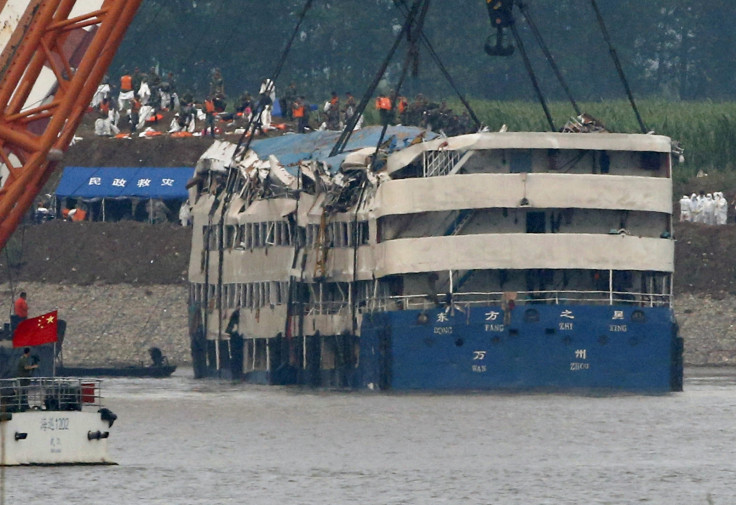China Yangtze tragedy: Rescuers drain water from hoisted vessel as death toll rises

Rescuers are attempting to drain water from the hoisted vessel, which capsized in the Yangtze river with over 450 aboard, in a bid to refloat the ship.
With 97 bodies having being recovered so far, authorities have managed to turn the submerged hull of the luxury cruise ship Eastern Star upright, which sank on Monday, 1 June.
More than 50 divers were working overnight tying slings around the 2,200-tonne vessel to turn the ship over. Heavy steel bars were placed underneath the vessel, following which the hull was lifted by two massive cranes.
Two large nets were placed just near the cranes to hold corpses falling out of the ship. Eastern Star has been turned 180 degrees and currently rests on its bottom while a large part of the ship still remains submerged.
After the ship is turned upright, it will be easier for rescuers to "search for the missing persons in the shortest possible time and give maximum protection to the dignity of the deceased," said the Chinese transport ministry, according to the state-run Xinhua news agency.
Emergency personnel earlier cut three holes into the submerged hull, but their attempts did not yield any results in finding survivors.
With nearly 340 people remaining unaccounted for, hopes of finding survivors are extremely remote.
"When the ship overturned, the remaining air would form air pockets. If we open the hull carelessly, water might fill the air pockets, which could compromise the ship's stability and put any survivors in danger. If they are trapped in an air pocket, passengers may still have a chance of surviving," Li Qixiu, an expert at the Naval University of Engineering who is also part of the rescue efforts, told Xinhua.
Thousands of troops, 150 boats, and a helicopter are assisting in rescue measures, following one of the deadliest maritime incidents in the country's history.
© Copyright IBTimes 2024. All rights reserved.






